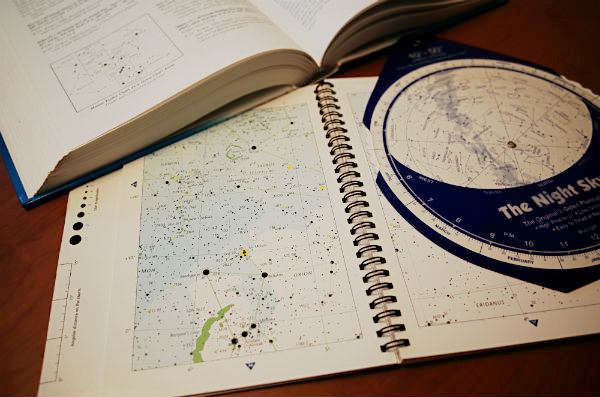Star Hopping. For some the term is quaint – an outmoded method of finding things in the night sky. In this day of affordable, accurate computerized mounts that can point your telescope at virtually any object in the sky with the click of an smartphone app why bother with paper charts and manual mounts?
If, in your view, astronomy is mainly about looking at objects in the night sky then it follows that time spent finding things to look at means less time spent looking at them. So why wouldn’t you make the most of your limited observing time by using a computerized mount?
While I can empathize with this point of view I don’t embrace it myself. And though I wouldn’t say that stargazing for me is more about the journey than the destination, the act of locating objects and learning their place in the sky is an engaging part of my observing and it enhances my enjoyment of the subjects I view.
For the star hopper, observing a new object in an unfamiliar part of the sky for the first time requires a series of personal discoveries. To begin the observer first needs to find the constellation in their sky. I’ve found a planisphere to be a handy way to orient myself with the current positions of the stars. After the constellation has been found it is possible to relate it others that have already been learned. In effect this is like filling in a missing puzzle piece in your internal map of the sky.
Once the constellation’s form can be seen in the sky we can find the subject’s general place in the constellation. While some large, bright objects are marked on the planisphere, this usually requires referring to a more detailed chart or sky atlas to get an idea of the object’s position.
Up to this point we haven’t even looked through the scope or finder. We’ve just been adding details to our internal sky map. Getting the subject in the eyepiece requires zooming in further and focusing not just on the shape of the constellation but on the stars that lie within its boundaries. This is where “star hopping” gets its name, as we imagine a path that takes us from a visible star to the subject we want to view. Until, finally, we behold the object in the eyepiece.
For some all this may seem like grunt work that takes away from the experience of actual observing but for me the process is a key part of maximizing my enjoyment of astronomy. It enhances the sense of discovery which feeds the feeling of wonder I experience in viewing these objects.
Through this method I can internalize an object’s place in the sky and relate it to others I know. Once I’ve visited an object a few times I can go outside with just a telescope or binoculars, without a chart of any kind and pick it out of the sky.
Of course not everyone is wired the same way and though star hopping works well for me it may not be the best observing practice for you. As long as you are having fun with your observing, you are doing it right.
At least that’s the way I see it.
-Dave
Original content copyright 2015 by David Philips. All Rights Reserved. This post may contain links to affiliate sites; sales through affiliate links may benefit this site.
